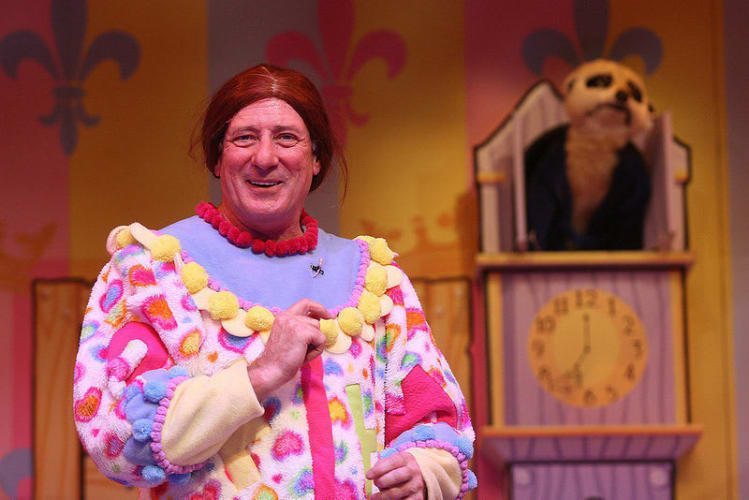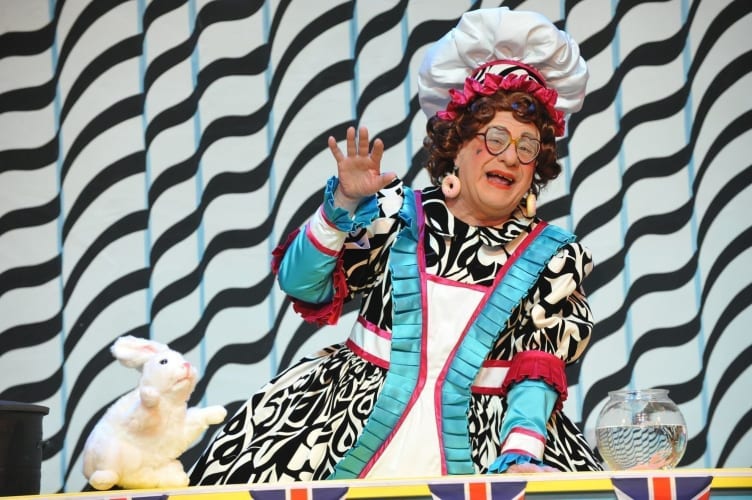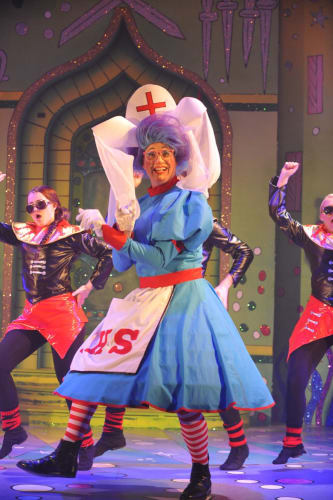Creating a new 'Robin Hood' for Nottingham, York and Greenwich
It seems that the desire to present a rarely-performed title strongly influenced the pantomime practitioners’ decisions to write, direct and appear in the title, rather than the topical nature of tax increases and opportunities for Olympic-inspired archery competitions. But what makes Robin Hood such a good pantomime?
"The character of Robin is known to all age groups," says Kaler, with Pollard arguing that Hood, "is probably the most recognisable of all British folk heroes; part of the British psyche and our DNA."
Strong and identifiable characters are a must when writing a pantomime, but narrative structure is also important. As Kaler explains, with Robin Hood, "you have room for manoeuvre with romance, adventure, spectacle, slapstick, historical events, and an abundance of pathos where the orphaned babes are concerned".
This "room for manoeuvre" is what attracted Alan Taylor to write his version of the tale in which he outlines how Robin Hood came to be outlawed from Nottingham in the first place. "Robin Hood is such a good story for pantomime because there are so many versions," he explains. "I have invented my own story. I’ve kept certain characters such as the Sheriff of Nottingham and Maid Marian, but I have created new characters to give the females more parts."
Characters in Alan Taylor’s cast include Tilly Tuck the Tomboy and Milly Miller, whilst Pollard has invented a Spanish sorceress called Consuela and given Alan-a-Dale a Scottish flair to become Alan McDale. Although Pollard enjoyed creating a pantomime that focuses on the story of Robin Hood himself, and Alan Taylor enjoyed inventing new female characters for his regular team of performers, Kaler describes the writing process as "torturous."
As soon as I started writing the script I realised I did not have roles for all the regulars," he explains. "There are stock characters in Robin Hood that the audience quite rightly wants to see on stage: Friar Tuck, Little John, etc. None of these parts would do justice to their talents. As a consequence it’s been quite a long process creating roles for all of them, especially the girls, as Marian is the only principal part of any note."
Kaler has invented the characters of Broomhilda and Lady Hamalot, amongst others, for his version of the tale, but, of course, where would pantomime be without the central role of Dame? How have Kaler, Alan Taylor and Pollard ensured their characters remain central to proceedings?
This year Kaler is playing Mrs Hattie Hood, Robin Hood’s mum. "She comes to a village called Hamalot (just outside Nottingham) from York to visit her sons," he explains. "She is under the impression that Robin is an accountant and doing very well for himself as he appears to own a forest! Her other son Geoffrey is an out of work pole dancer currently on benefits and is a constant embarrassment to her."
At Greenwich, Robin Hood’s Dame takes on the role of Marian’s nursemaid, Nurse Joan Germolene, who accompanies Marian when she is forced to live at Nottingham Castle under the wardship of the Sheriff after her father dies. "Later in the story I flee," Pollard tells me," along with Marian to Robin's camp, where, because of my height, I am given the name Little Joan!"
Alan Taylor’s Dame is also a nurse, but not to Maid Marian. As Alan Taylor explains, Nurse Nelly Noggins "is brought out of retirement by the Sheriff to care for two babes that he is landed with."


